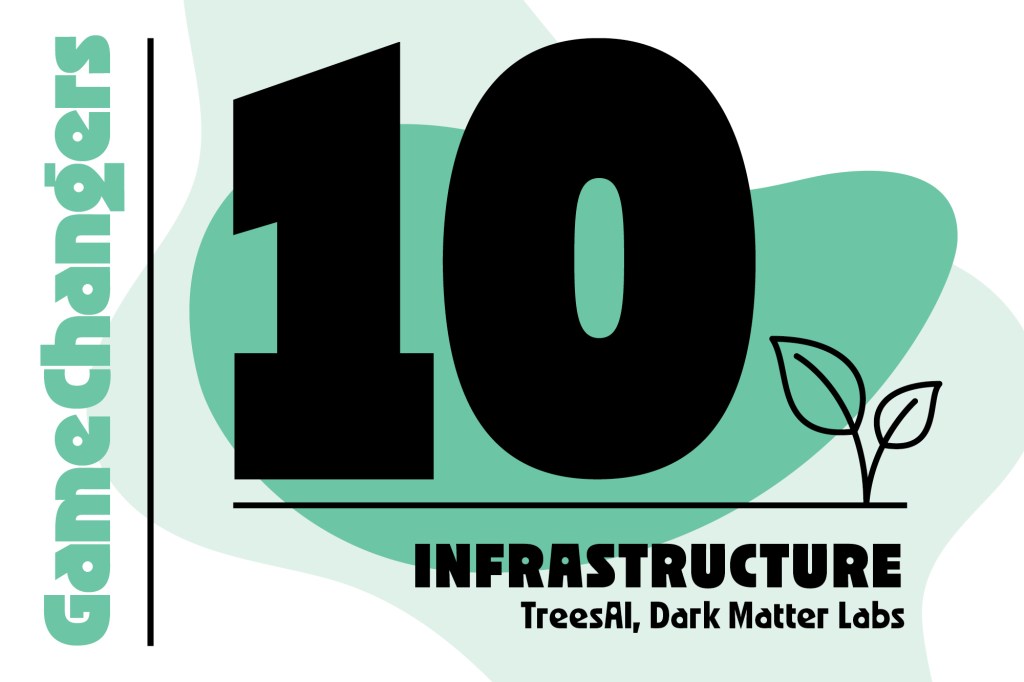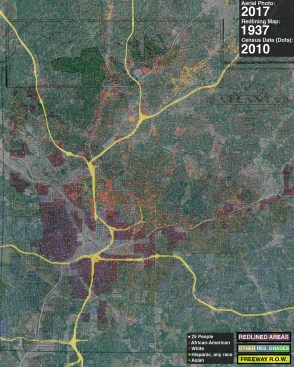
courtesy Segregation by Design / @segregation_by_design
Adam Paul Susaneck’s research on Atlanta highlights how racist urban practices shaped the city’s built environment over time.
New York City–based architectural designer Adam Paul Susaneck started the Segregation by Design website after reading Richard Rothstein’s The Color of Law: A Forgotten History of How Our Government Segregated America (Liveright, 2017). “[Rothstein] goes tactic by tactic, describing the policy measures by which the government enacted segregation,” Susaneck says. “I want[ed] to see what that looks like in practice.”
The website grew out of his increasing frustration with the American city. “When you walk around in the American downtown, the sense of destruction is palpable,” Susaneck says. The architect is clear in his position that the U.S. is at the center of the world’s worst Modernist city planning. “I think the lack of respect for the built environment is an American thing,” Susaneck says. “A lot of the disrespect for the urbanism built into Modernism is racism.”
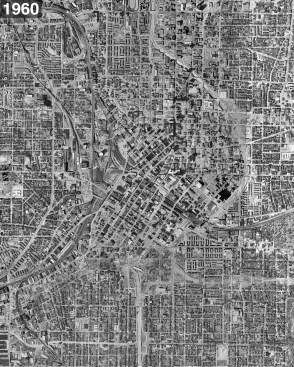
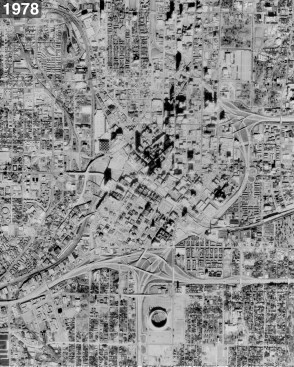
courtesy Segregation by Design / @segregation_by_design
These topics are touched upon in architectural history—through transportation and housing, for example—but a lot of the issues are discussed separately even though they are interrelated. “It’s systemic,” Susaneck says. Using a combination of striking visual elements and careful research, the site—which is organized by cities, including Atlanta, Boston, Philadelphia, and Houston—clearly marries these topics and makes obvious ways that midcentury politicians, architects, and planners used the Federal-Aid Highway Act of 1956, which created the interstate highway system, to literally divide and conquer communities.
Compelling videos accompany the site’s imagery, depicting the new expressways and housing projects relentlessly scything through American cities in the 1950s and 1960s. Visitors accustomed to seeing Google Earth’s ubiquitous satellite imagery might take a moment to recognize the work these videos entailed. To show the pre-1956 cities, Susaneck has stitched together 1938 aerial photographs to create nearly flawless visual depictions of the intact urbanism that was systematically destroyed.
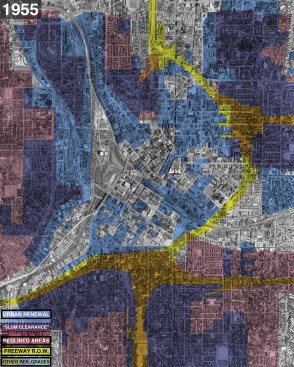
courtesy Segregation by Design / @segregation_by_design
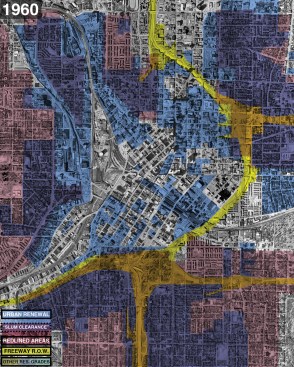
courtesy Segregation by Design / @segregation_by_design
Segregation by Design continues to grow. Thanks to a forthcoming full-time Ph.D. program at the Delft University of Technology in the Netherlands, Susaneck intends to document the approximately 180 municipalities that received funding from the 1956 Highway Act. As of this writing, there are only a dozen cities on his site, but that’s soon to change.
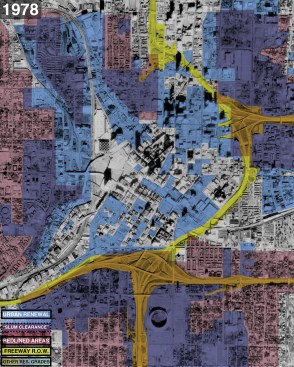
courtesy Segregation by Design / @segregation_by_design
This article first appeared in the October 2022 issue of ARCHITECT.
-
Next Progressives: Delma Palma
The New York City Housing Authority deputy director of design wants to do away with the "idea that one person behind a desk can best understand how to design for a community of users."

-
Laurian Ghinițoiu Offers a Fresh Approach to Photographing the Built Environment
The photographer focuses on its social, political, and physical contexts.
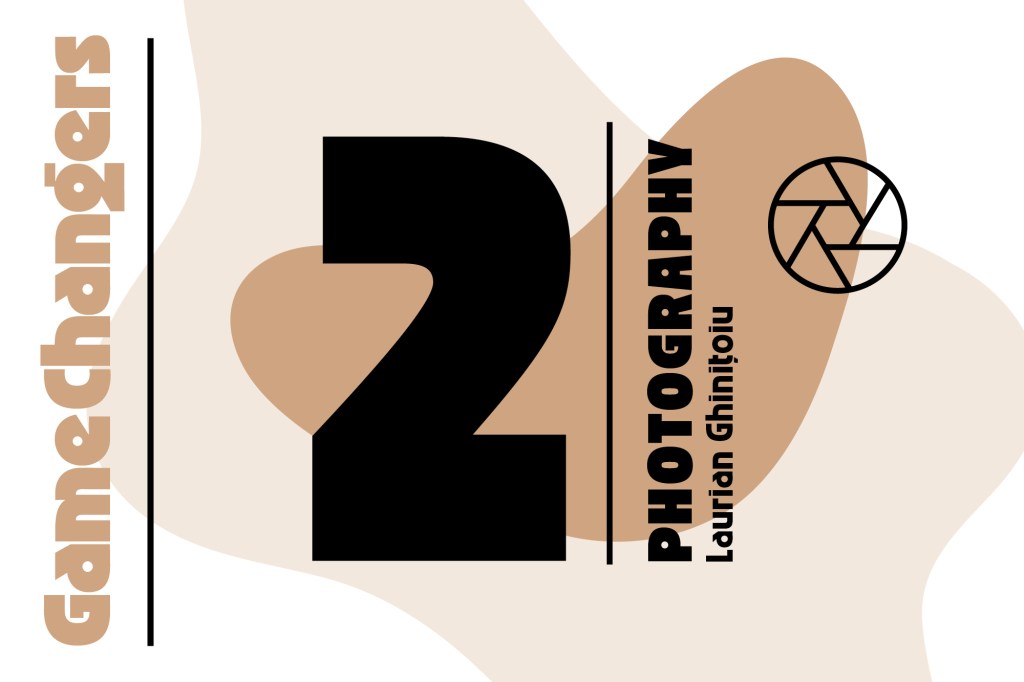
-
In Tuskegee and Pennsylvania, Educators Lead the Next Generation of Architectural Preservation
Leaders from Tuskegee University’s Department of Architecture and University of Pennsylvania’s Weitzman School are spearheading an initiative dubbed “Capacity Building for Sustainable Preservation of Civil Rights Heritage Places.”
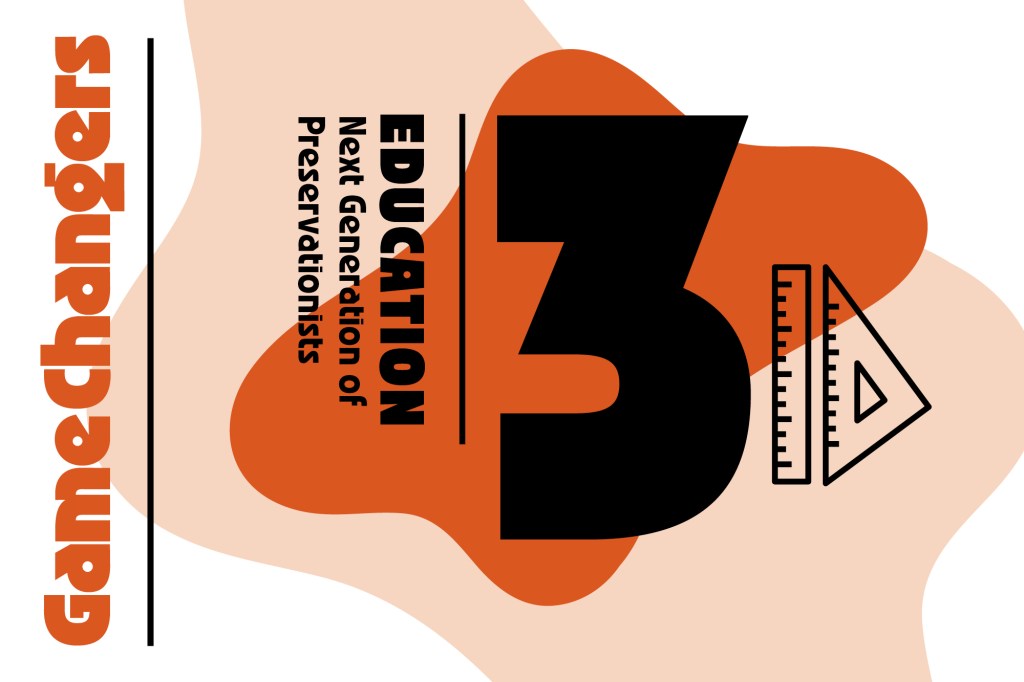
-
Open Design Collective Gets Communities Involved in Planning Their Own Neighborhoods
The Oklahoma City–based nonprofit's first major project sought to repair damage from urban renewal in the local, largely Black community of South of 8th Street.
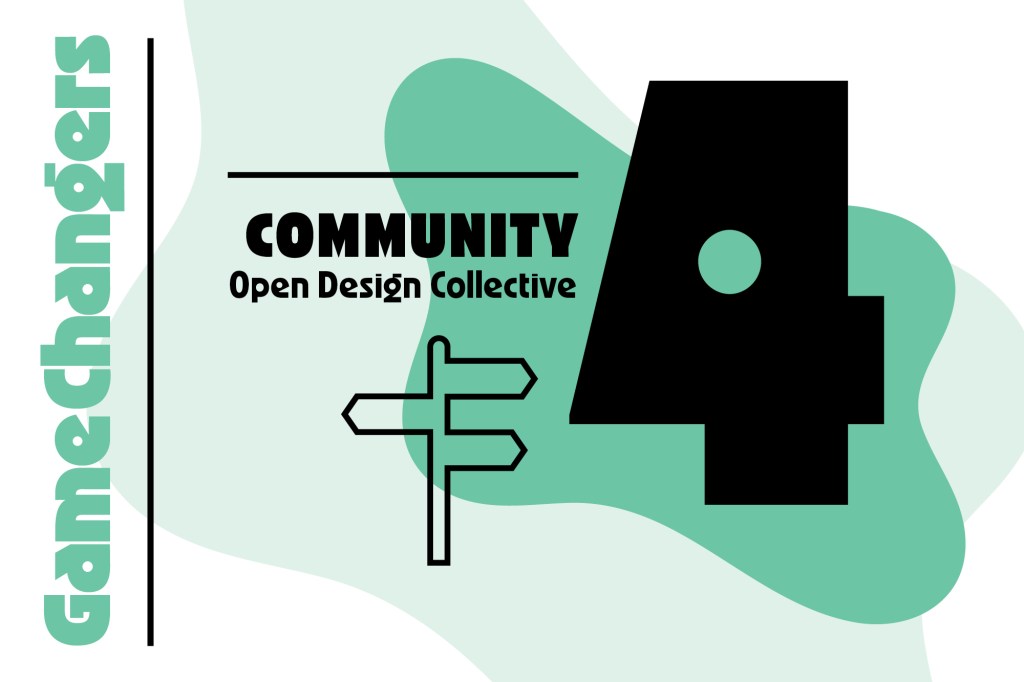
-
Nupur Chaudhury Imagines Public Health as a Matter of the Built Environment
Working alongside Dark Matter University, the urbanist and health-equity expert helped launch a curriculum that trains communities to lead their own design processes.

-
Tonika Lewis Johnson Uses Maps to Explore the Effects of Contract Buying on a Chicago Neighborhood
Called Inequity for Sale, the social justice artist's new project came to life during a 2021 residency with the National Public Housing Museum.

-
With This Knit-Casting Process, Concrete Leans Sartorial and Minimizes Production Waste
Tsz Yan Ng, Sean Ahlquist, and Evgueni Filipov are harnessing CNC-manufactured knits to develop a process that results in intricate and efficient glass-fiber-reinforced concrete.
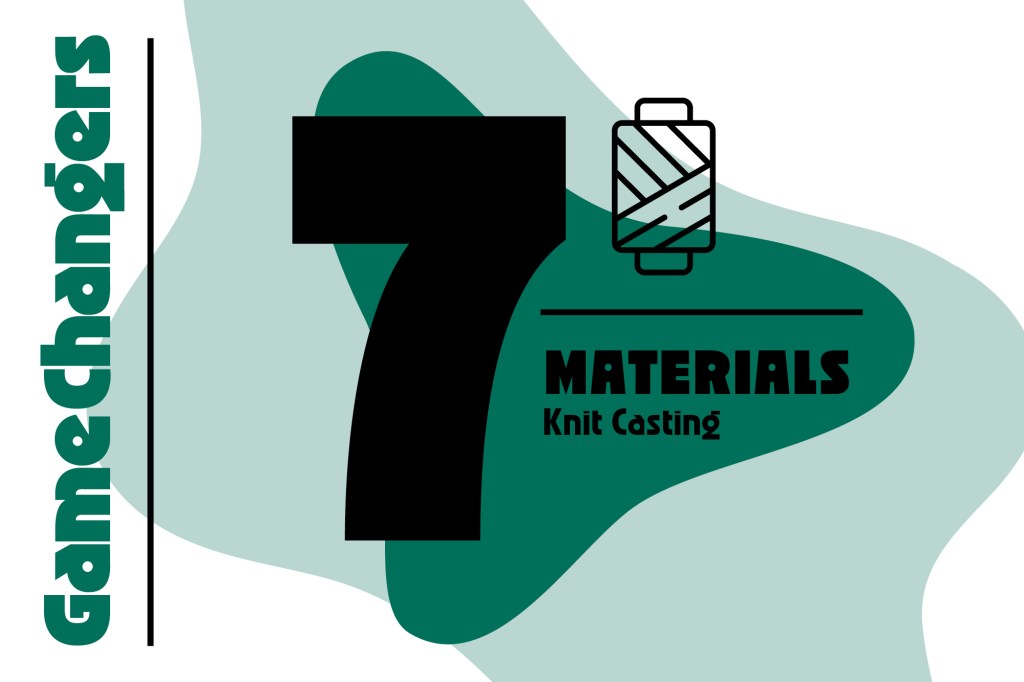
-
Segregation by Design Examines Systemic Racism in American Cities
Founded by the New York architectural designer Adam Paul Susaneck, the website presents the stark reality of racist urban planning practices in the built environment.

-
This Nonprofit Uses Schools to Anchor Mixed-Use, Income-Diverse Community Development
Helmed by Nora Jendoubi and Derwin Sisnett, Memphis, Tenn.–based Maslow Development aims to create structures for all residents to succeed.
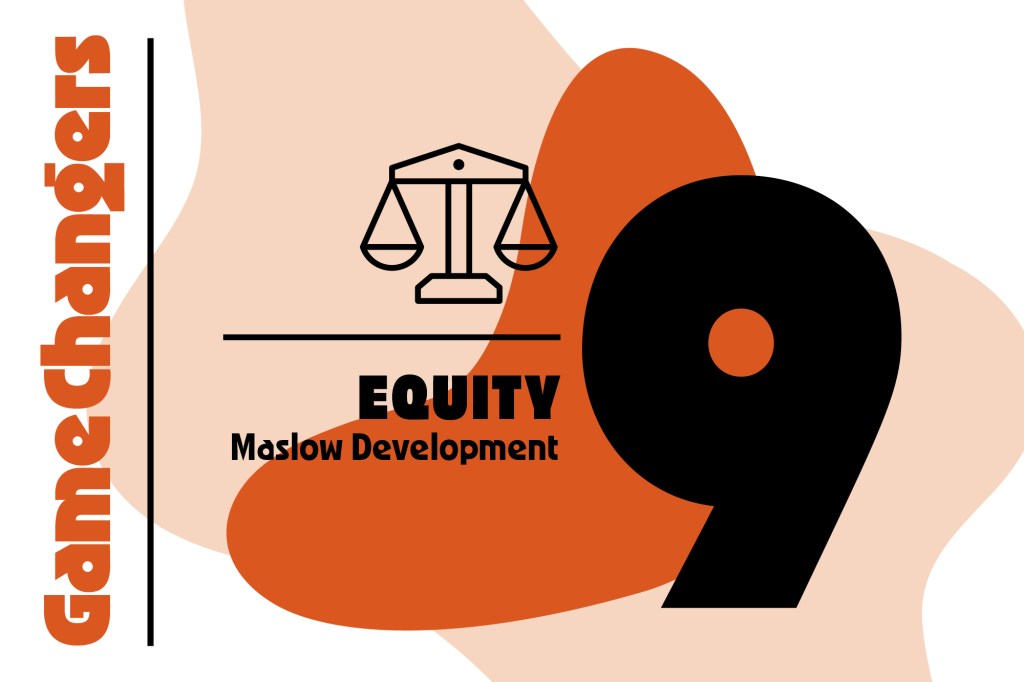
-
TreesAI Shows Communities How to Maintain and Grow Their Urban Forests
The startup, founded by the Amsterdam-headquartered, not-for-profit Dark Matter Labs, offers a software aimed to help cities plan and sustain urban foliage.
